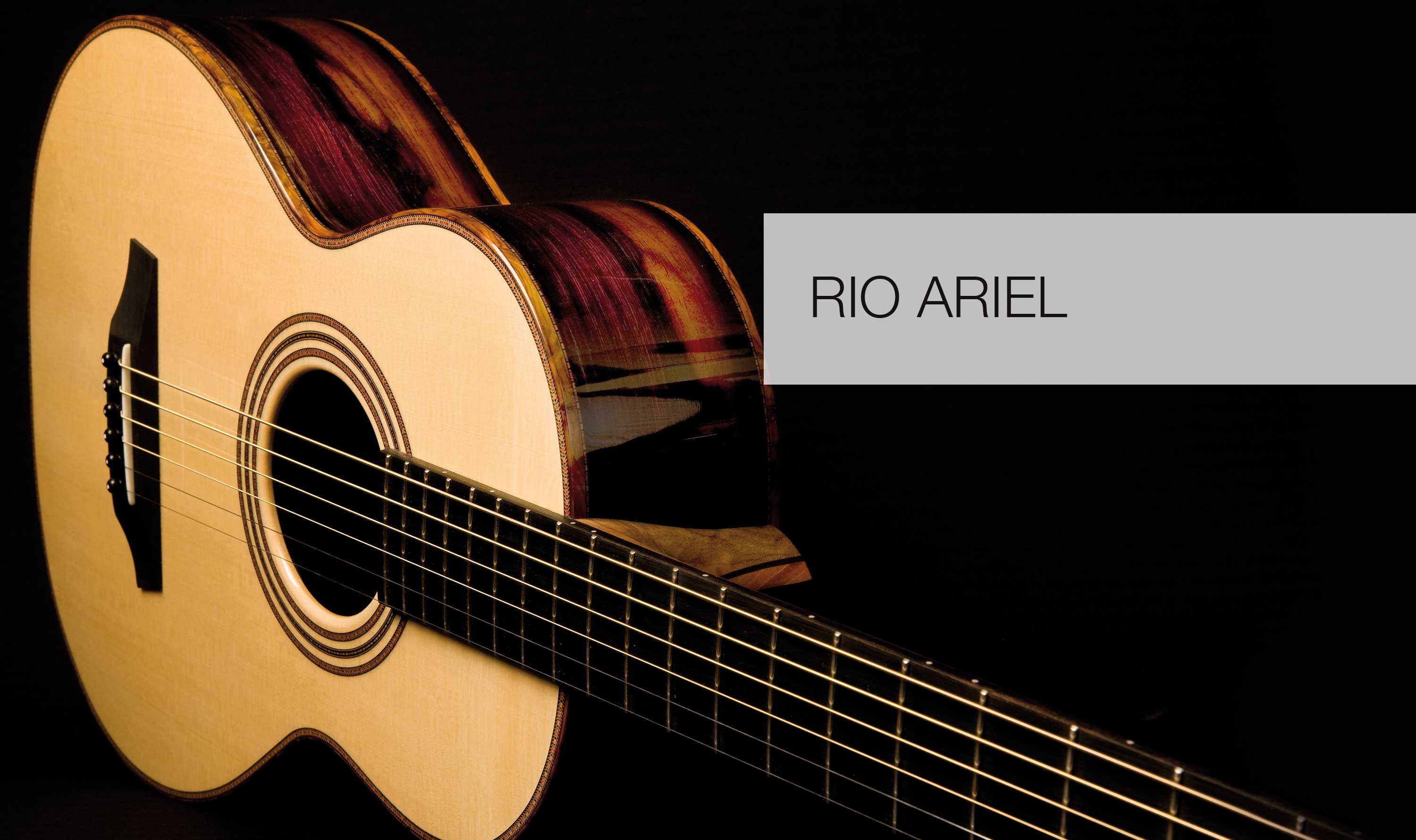

Please note: due to changes in regulations and constant design developments, we sometimes need to change details such as binding and inlay materials.

The back and sides of this guitar came from the same source as the timber for the Rio and Cedar Falstaff, but this time in the form of a large thin board. Cleaned up, the timber can be seen and was just big enough for one small guitar. The back of this guitar is one piece ~ no joins, just about impossible even when Rio was easily obtained. The back and sides are from the same piece of wood ~ “flitch matched”, which in this case means that the sides are not book matched twins, just perfect brother and sister. The head veneer is taken from another piece of Brazilian Rosewood, as nothing was left from the original piece, 100% efficiency in wood use.
The timber had to be complemented with the best possible soundboard, and this time it’s German Spruce, so perfect that I suspect it is Englemann Spruce. Exceptionally fine straight grain, with an abundance of cross grain “silking”, proof if it were needed, of perfect quarter sawing. The bindings are another wonderful “find”. A strange, uneven board of black timber that, when cut open, revealed twists and burrs in amongst lovely red, brown and orange. Almost certainly Yew, very difficult to handle in such long thin lengths but well worth the effort. Marquetry purflings based on Pear wood sit either side of the bindings. The plain Ebony fingerboard is fitted to a neck of laminated English Walnut, Mahogany and black dyed Boxwood. Including the internal components, I make that twelve different timbers.
Internally, most of this guitar is the same as the Standard Ariel, but the strong Spruce soundboard gave a little more room to manoeuvre, and this time the braces are left higher than usual, but hollowed on both sides to reduce weight without losing too much stiffness. This guitar jumps at you, and the sustain goes on, and on, and on.
Click on an image to enlarge ...

© 2025 Fylde Guitars. All Rights Reserved